Table of Contents
Let's face it, weeknights are a marathon, not a sprint, especially when dinner rolls around. You're tired, maybe the kids are bouncing off the walls, and the last thing you want is a sink piled high with pots and pans after cooking. What if you could whip up a classic comfort meal, something everyone actually eats, without the kitchen looking like a disaster zone? That’s where the magic of 1 pot spaghetti and meatballs comes in.
Why Make One Pot Spaghetti and Meatballs?
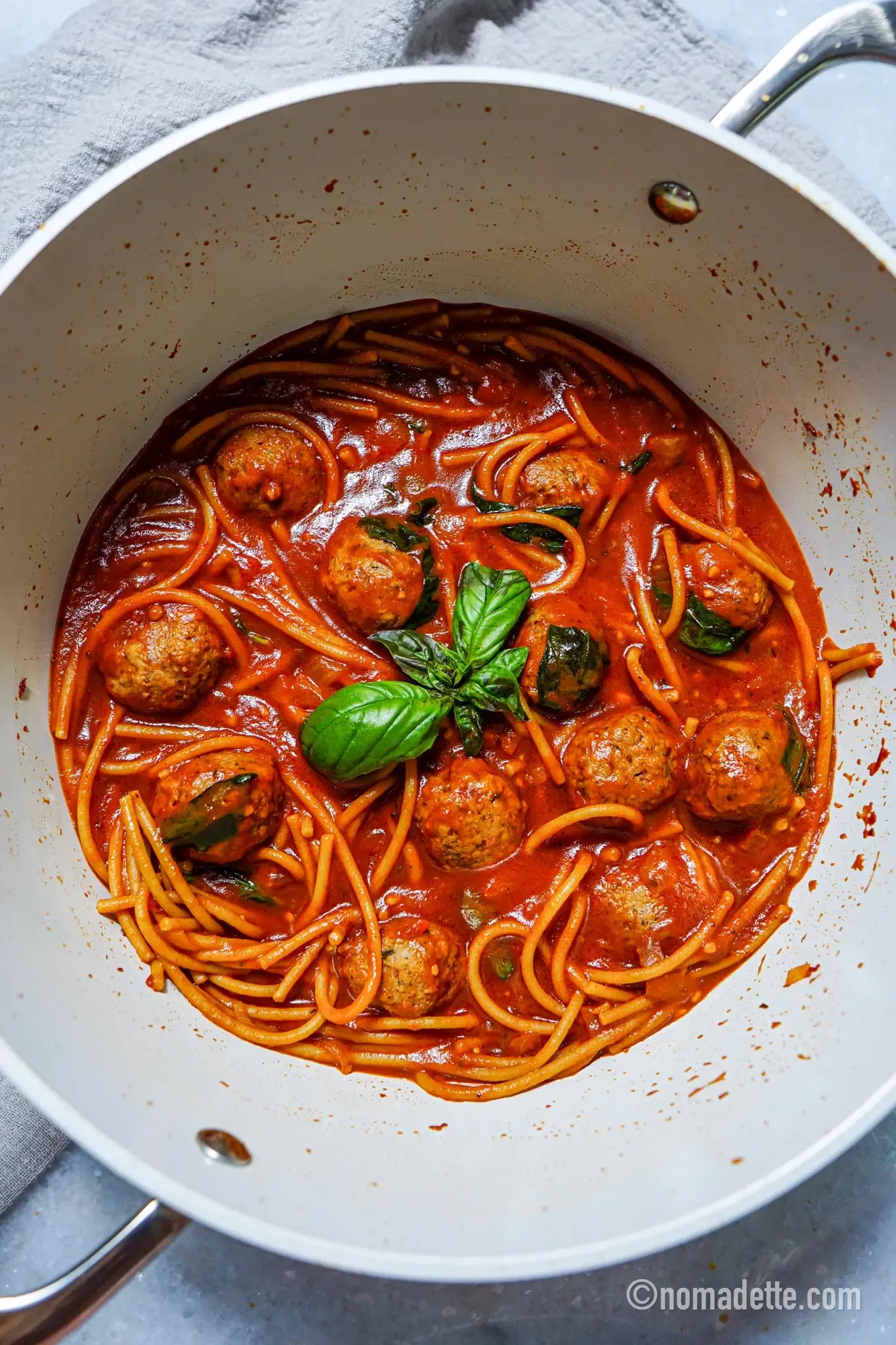
Why Make One Pot Spaghetti and Meatballs?
Alright, let's cut to the chase. Why bother with 1 pot spaghetti and meatballs when you could dirty three pans, a colander, and probably a splatter screen? Because you value your time and sanity, that's why. This isn't just a recipe; it's a strategic move against the tyranny of dish duty. Imagine throwing everything into one pot – sauce, meatballs, uncooked pasta – walking away for a bit, and coming back to a complete, satisfying meal. No boiling water in one pot, simmering sauce in another, baking meatballs in a third. It’s a streamlined operation, perfect for those nights when the idea of cooking feels like scaling Everest but takeout seems like a sad capitulation. Plus, using one pot means all those flavors meld together beautifully as the pasta cooks directly in the sauce, absorbing every bit of savory goodness.
Gathering Your Ingredients for One Pot Spaghetti and Meatballs
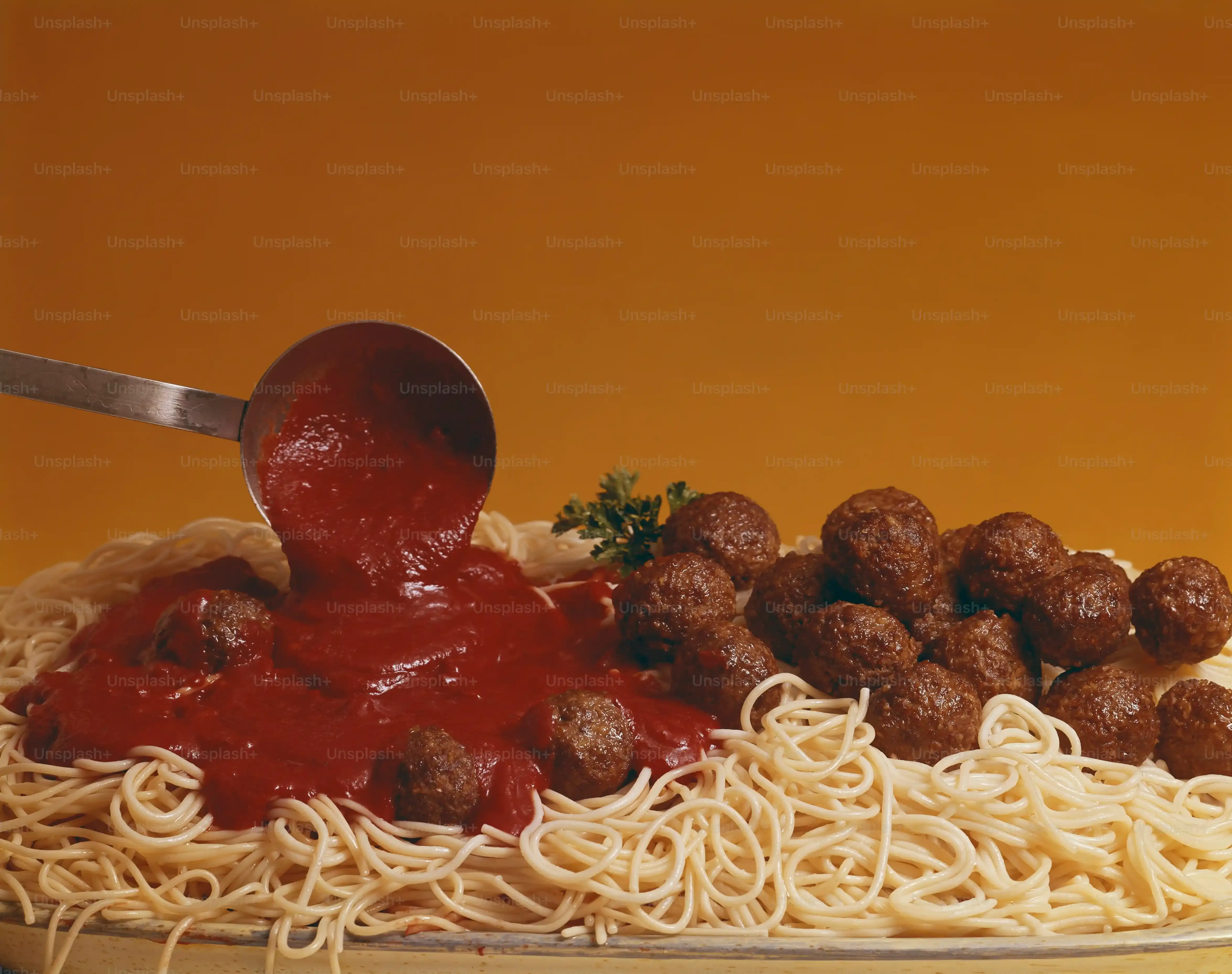
Gathering Your Ingredients for One Pot Spaghetti and Meatballs
Starting with the Stars: Meatballs and Sauce
Alright, let's talk about the foundation. When you're gathering your ingredients for 1 pot spaghetti and meatballs, the first things on your list should be the meatballs and the sauce. Look, I'm not going to tell you to spend an hour rolling your own from scratch unless that's your jam. For the one-pot weeknight special, frozen meatballs are your best friend. Grab a bag of decent quality frozen beef, pork, or a mix – whatever you prefer. They cook right in the sauce, infusing it with flavor and saving you a ton of prep time. Don't thaw them; they go in frozen.
Next up, the sauce. A good jarred marinara or spaghetti sauce is perfectly acceptable, even encouraged. You need about 24-32 ounces. Pick one you actually like the taste of, because it's going to be the base flavor for everything. This isn't the time to experiment with that weird artisanal sauce you're unsure about. Stick with a classic you trust.
The Liquid Base and Flavor Boosters
Now, for the liquid that makes the magic happen – this is key for cooking the pasta directly in the pot. You'll need a good amount of liquid to ensure the spaghetti gets fully submerged and cooks through without sticking or burning. A combination of beef or chicken broth and water works well. Broth adds another layer of savory depth that plain water just can't replicate. Figure on needing roughly 4-5 cups total liquid, adjusting based on your pot size and the specific sauce thickness.
Don't forget the flavor boosters. Garlic powder, onion powder, and dried Italian seasoning are staples here. They punch up the flavor profile of the sauce and meatballs. If you like a little heat, a pinch of crushed red pepper flakes is non-negotiable for me. It adds a subtle warmth that elevates the whole dish without setting your mouth on fire, unless you go wild with it.
- Frozen Meatballs (about 12-16 oz)
- Jarred Marinara or Spaghetti Sauce (24-32 oz)
- Beef or Chicken Broth
- Water
- Dried Spaghetti (about 8-12 oz)
- Dried Italian Seasoning
- Garlic Powder
- Onion Powder
- Crushed Red Pepper Flakes (optional)
- Salt and Pepper
- Parmesan Cheese and Fresh Parsley (for serving)
The Pasta and Finishing Touches
Of course, you can't have spaghetti and meatballs without the spaghetti. You'll need about 8 to 12 ounces of dried spaghetti. Break it in half if your pot isn't wide enough to accommodate the full length; this makes stirring and submerging easier. Don't use fresh pasta here; it cooks too quickly and can get gummy in this method. Dried pasta holds up better to simmering in the sauce.
Finally, think about your finishing touches. A sprinkle of grated Parmesan cheese is practically mandatory. It adds that salty, nutty finish that ties everything together. Fresh chopped parsley brightens up the dish visually and adds a hint of fresh flavor. Having these ready to go when the pasta is al dente means you can serve this 1 pot spaghetti and meatballs masterpiece immediately, while it's hot and glorious.
Cooking Your One Pot Spaghetti and Meatballs: StepbyStep
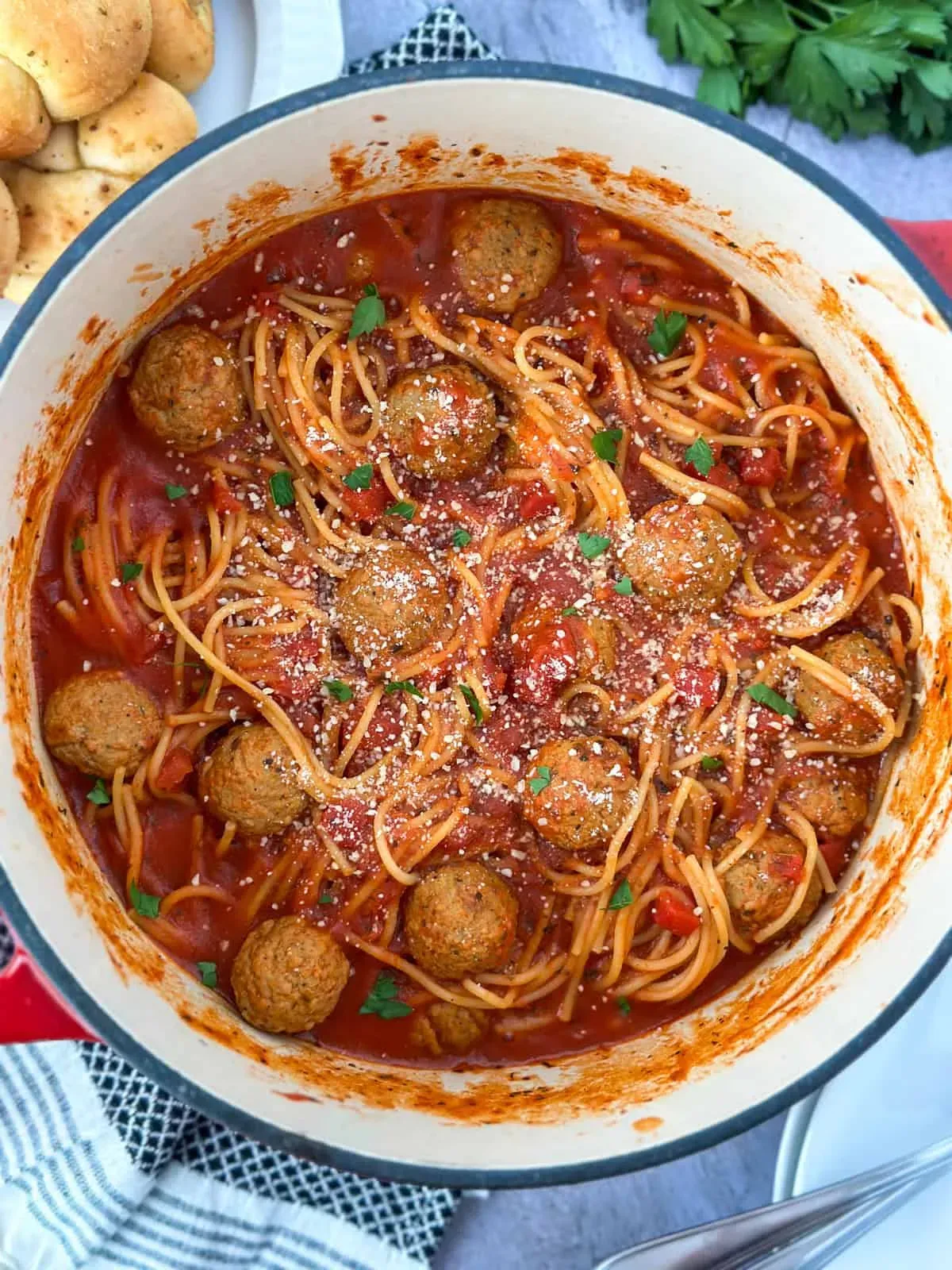
Cooking Your One Pot Spaghetti and Meatballs: StepbyStep
Getting the Base Simmering
Alright, let's get this show on the road and start **Cooking Your One Pot Spaghetti and Meatballs: Step-by-Step**. Grab that trusty Dutch oven or large, heavy-bottomed pot. This is where all the magic happens. Pour in your jarred marinara sauce, the beef or chicken broth, and the water. Give it a good stir to combine everything. Now, toss in those flavor boosters: the dried Italian seasoning, garlic powder, onion powder, and those optional but highly recommended crushed red pepper flakes. Add a pinch of salt and a grind of black pepper. Crank the heat up to high and bring this mixture to a rolling boil. You want it bubbling nicely before you add the next key players.
Adding the Meatballs and Pasta
Once your sauce base is boiling, it's time for the stars of the show. Carefully drop in your frozen meatballs. Yes, frozen! No need to brown them first; they'll cook through and release their flavor right into the sauce. Give the pot another gentle stir to make sure the meatballs are mostly submerged. Now, for the spaghetti. Break the dried spaghetti in half if needed and add it to the pot, fanning it out a bit so it doesn't clump together. Push the pasta down with a spoon or tongs to get it as submerged in the liquid as possible. Reduce the heat to low, cover the pot tightly, and let it simmer. You'll need to stir it occasionally, maybe every 5-7 minutes, to prevent the pasta from sticking to the bottom and to ensure it cooks evenly. Simmer for about 15-20 minutes, or until the pasta is al dente – tender but still has a slight bite.
- Combine liquids, sauce, and seasonings in a large pot.
- Bring mixture to a boil over high heat.
- Add frozen meatballs and dried spaghetti.
- Push pasta down to submerge.
- Reduce heat to low, cover, and simmer.
- Stir occasionally to prevent sticking.
- Cook until pasta is al dente (about 15-20 minutes).
Troubleshooting Common Issues with One Pot Spaghetti and Meatballs
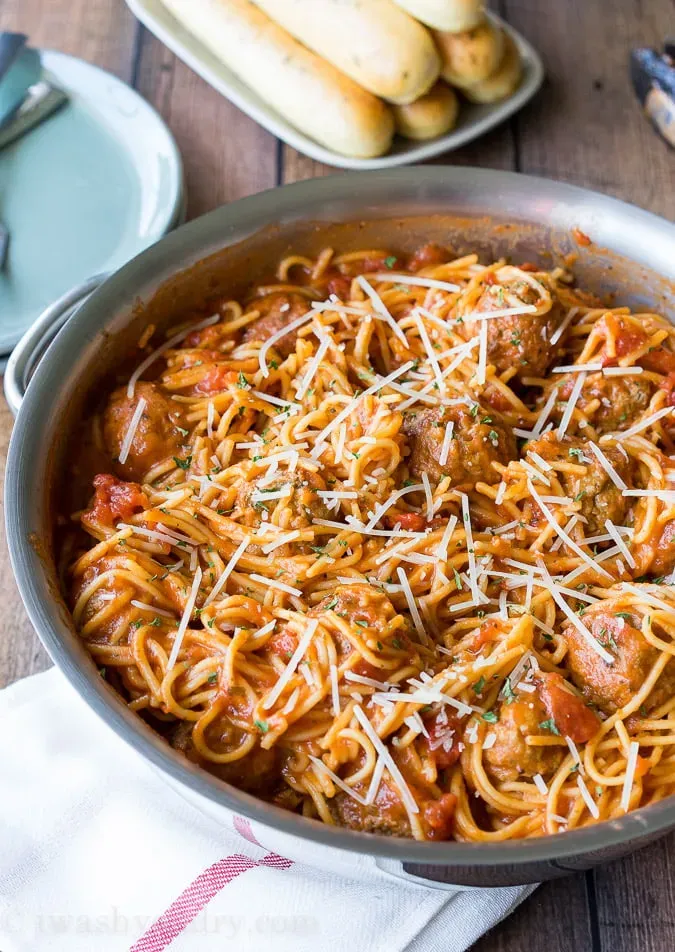
Troubleshooting Common Issues with One Pot Spaghetti and Meatballs
When the Pasta Won't Cooperate
So you've got your 1 pot spaghetti and meatballs simmering away, you lift the lid for a peek, and disaster! The pasta is either welded to the bottom of the pot or it's still stubbornly hard after the suggested cooking time. This is a classic hurdle in the one-pot game. Usually, it comes down to not enough liquid or not stirring often enough. Remember, the pasta needs to be mostly submerged to cook properly. If it looks dry, add another half cup to a cup of hot broth or water. Don't use cold liquid; it drops the temperature too much. And stir, stir, stir! Especially in the first 10 minutes of simmering, give it a good scrape from the bottom to prevent sticking. If the pasta is still hard but the sauce is getting too thick, again, a splash more liquid and a few more minutes of simmering, covered, will usually do the trick.
Sauce Consistency Woes
Another common snag when making 1 pot spaghetti and meatballs is ending up with a sauce that's either too watery or resembles tomato paste. If it's too thin after the pasta is cooked, simply remove the lid, increase the heat slightly, and let it simmer uncovered for a few minutes. The steam escaping will help reduce and thicken the sauce. Keep an eye on it and stir so it doesn't burn. If it's too thick from the start or gets too thick while cooking, you need more liquid. Add broth or water, a half cup at a time, until you reach your desired consistency. It's easier to add more liquid than to take it away, so start with the recommended amount and adjust as needed during cooking.
- Pasta sticking? Add more hot liquid (broth or water) and stir frequently, scraping the bottom.
- Pasta still hard? Ensure it's submerged; add liquid if needed and simmer longer.
- Sauce too thin? Simmer uncovered for a few minutes to reduce.
- Sauce too thick? Add hot broth or water, a half cup at a time, until desired consistency is reached.
Beyond Spaghetti: Other One Pot Pasta Adventures
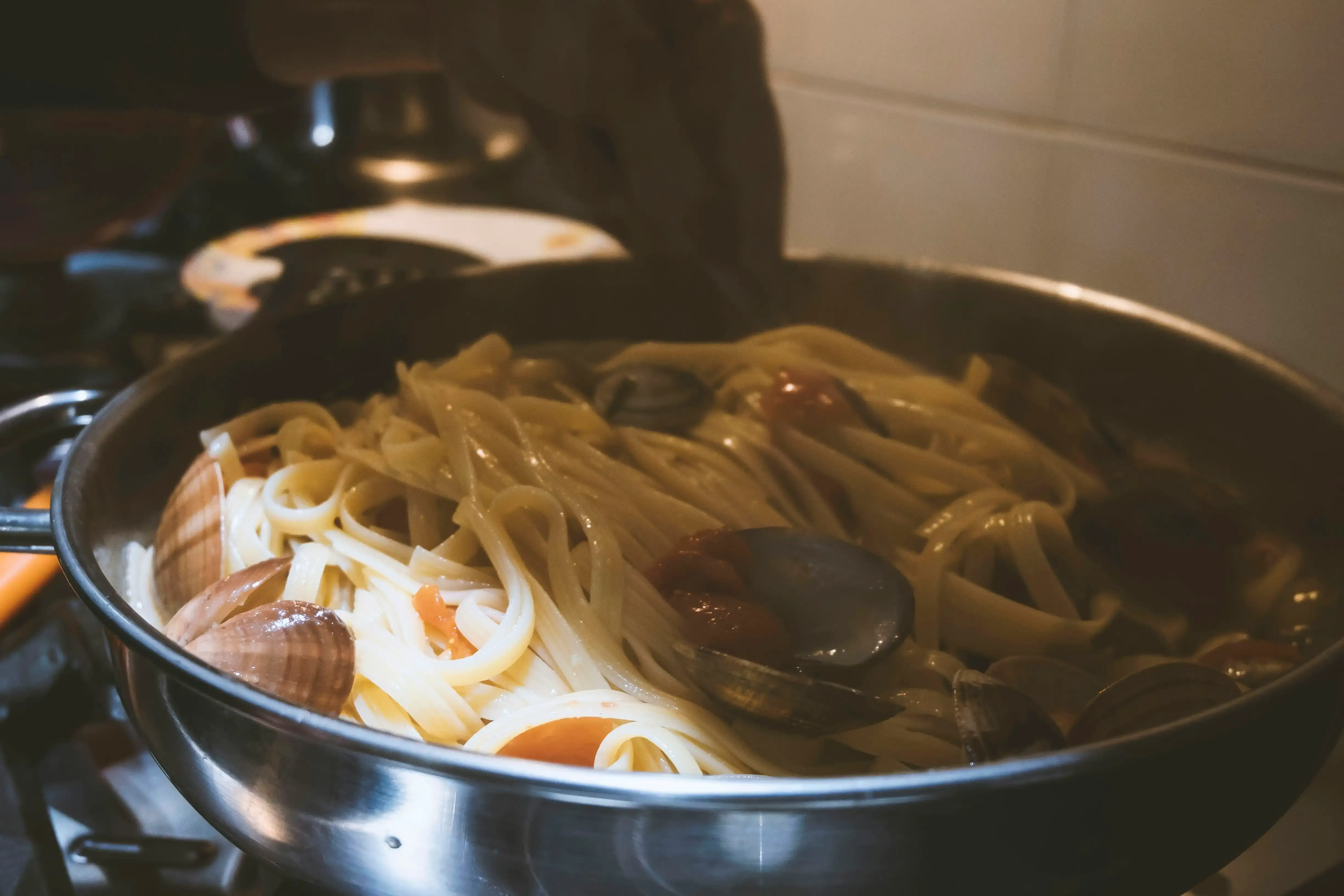
Beyond Spaghetti: Other One Pot Pasta Adventures
Applying the One-Pot Magic
so you've conquered 1 pot spaghetti and meatballs. You've seen the light, the glorious lack of dishes. But don't stop there! The beauty of the one-pot method isn't limited to just spaghetti and meatballs. The core principle – cooking pasta directly in the sauce and liquid – is a game-changer you can apply to a whole universe of pasta dishes. Think about it: creamy sauces, veggie-loaded concoctions, spicy numbers... they can all potentially be streamlined into a single pot operation. It's about understanding how the pasta absorbs liquid and tailoring your ingredients and cooking time accordingly.
Trying New Combinations
Once you grasp the basic liquid-to-pasta ratio that worked for your 1 pot spaghetti and meatballs, you can start experimenting. How about a one-pot chicken alfredo? Cook some diced chicken, add broth, cream, and fettuccine. Or maybe a vegetarian pesto pasta with cherry tomatoes and spinach? Sauté garlic, add broth, pasta, tomatoes, and stir in pesto and spinach at the end. The possibilities are genuinely vast. The key is ensuring enough liquid for the pasta to cook and selecting ingredients that cook in a similar timeframe or can be added in stages. Delicate greens, for instance, go in towards the end.
- One-Pot Chicken Alfredo
- One-Pot Pesto Veggie Pasta
- One-Pot Sausage and Peppers Pasta
- One-Pot Lentil Bolognese
- One-Pot Creamy Tomato Rotini
Tips for Experimentation
When you're venturing into new one-pot pasta territory, start simple. Use shapes like penne, rotini, or farfalle; they tend to cook more evenly than very long strands. Always have extra hot broth or water on hand in case your sauce reduces too quickly or the pasta needs more time. Taste and adjust seasoning as you go. Remember, the liquid you use will become part of the sauce, so make sure it's flavorful. Don't be afraid to fail a little; maybe the first attempt is too watery, the next too thick. That's how you learn the nuances of *your* pot and *your* stove. The goal is still that minimal cleanup and maximum flavor payoff, just like with your successful 1 pot spaghetti and meatballs.
Your One Pot Victory Lap
So there you have it. No mountain of dishes, just a single pot delivering a satisfying meal. Making 1 pot spaghetti and meatballs is a practical win for busy lives. It's a simple, reliable way to get dinner done without the usual kitchen chaos. Give it a shot on your next hectic evening; you might just find your new go-to recipe.